-
Executive Summary
-
Market Introduction
-
Market Definition
-
Scope of the Study
- Research Objectives
- Assumptions & Limitations
-
Markets Structure
-
Key Takeaways
-
Market Research Methodology
-
Research Process
-
Primary Research
-
Secondary Research
-
Market Size Estimation
-
Forecast Model
-
Market Dynamics of Global Cross-Linked Polyethylene Market
-
Introduction
-
Drivers
-
Restraints
-
Opportunities
-
Challenges
-
Trends/Technology
-
Market Factor Analysis of Global Cross-Linked Polyethylene
-
Market
-
Supply Chain Analysis
- Raw Material Suppliers
- Distributors/Retailers/Wholesalers/E-Commerce
- End User
-
Manufacturers/Producers
-
Porter’s Five Forces Analysis
- Threat
- Bargaining Power of Buyers
- Bargaining Power
- Threat of Substitutes
- Intensity of Competitive
-
of New Entrants
-
of Suppliers
-
Rivalry
-
Pricing Analysis
-
Global Cross-Linked Polyethylene Market,
-
by Type
-
Introduction
-
High-Density Polyethylene (HDPE)
- Market Estimates & Forecast,
-
Market Estimates & Forecast, 2022-2030
-
by Region, 2022-2030
-
Low-Density Polyethylene (LDPE)
- Market
- Market Estimates & Forecast,
-
Estimates & Forecast, 2022-2030
-
by Region, 2022-2030
-
Others (Linear Low-density Polyethylene, Ethyl Vinyl
- Market Estimates & Forecast,
- Market Estimates & Forecast, by Region, 2022-2030
-
Acetate Copolymer, Polyolefin Elastomer)
-
Global Cross-Linked Polyethylene Market, by Technology
-
Introduction
-
Peroxide Method
- Market Estimates & Forecast, 2022-2030
-
Market Estimates & Forecast, by Region, 2022-2030
-
Silane Grafting Method
- Market Estimates & Forecast, 2022-2030
- Market Estimates &
-
Forecast, by Region, 2022-2030
-
Electron Beam Processing
- Market
- Market Estimates & Forecast,
-
Estimates & Forecast, 2022-2030
-
by Region, 2022-2030
-
Global Cross-Linked Polyethylene Market, by Process
-
Introduction
-
Chemical
- Market Estimates & Forecast,
- Market Estimates & Forecast, by Region, 2022-2030
- Market Estimates & Forecast, 2022-2030
- Market
-
Physical
-
Estimates & Forecast, by Region, 2022-2030
-
Global Cross-Linked Polyethylene
-
Market, by Application
-
Introduction
-
Wires & Cables
- Market Estimates & Forecast,
-
Market Estimates & Forecast, 2022-2030
-
by Region, 2022-2030
-
Plumbing
- Market Estimates & Forecast,
- Market Estimates & Forecast, by Region, 2022-2030
- Market Estimates & Forecast, 2022-2030
- Market
-
Medical
-
Estimates & Forecast, by Region, 2022-2030
-
Chemical
- Market
- Market Estimates & Forecast,
-
Estimates & Forecast, 2022-2030
-
by Region, 2022-2030
-
Automotive
- Market Estimates & Forecast,
- Market Estimates & Forecast, by Region, 2022-2030
- Market Estimates & Forecast,
- Market Estimates & Forecast, by Region, 2022-2030
-
Others (Mining, Watercraft Products)
-
Global Cross-Linked Polyethylene Market, by Region
-
Introduction
- Market Estimates & Forecast, 2022-2030
-
North America
-
Market Estimates & Forecast, by Type, 2022-2030
-
& Forecast, by Technology, 2022-2030
-
by Process, 2022-2030
-
Market Estimates
-
Market Estimates & Forecast,
-
Market Estimates & Forecast, by Application,
-
US
-
Market Estimates & Forecast, 2022-2030
-
Market Estimates & Forecast, by Product, 2022-2030
-
Market Estimates & Forecast, by Technology, 2022-2030
-
& Forecast, by Process, 2022-2030
-
Application, 2022-2030
-
Market Estimates
-
Market Estimates & Forecast,
-
Canada
-
Market Estimates & Forecast,
-
Market Estimates & Forecast, by Product, 2022-2030
-
Market Estimates & Forecast, by Technology, 2022-2030
-
Market Estimates & Forecast, by Process, 2022-2030
-
& Forecast, by Application, 2022-2030
-
& Forecast, 2022-2030
-
Estimates & Forecast, by Application, 2022-2030
-
Market Estimates & Forecast, 2022-2030
-
Forecast, by Product, 2022-2030
-
Technology, 2022-2030
-
Market Estimates
-
Europe
- Market Estimates
- Market Estimates & Forecast, by Product,
- Market Estimates & Forecast, by Technology, 2022-2030
- Market Estimates & Forecast, by Process, 2022-2030
- Market
- Germany
- France
-
Market Estimates & Forecast, by Product, 2022-2030
-
& Forecast, by Technology, 2022-2030
-
by Process, 2022-2030
-
Market Estimates
-
Market Estimates & Forecast,
-
Market Estimates & Forecast, by Application,
-
Italy
-
Market Estimates & Forecast, 2022-2030
-
Market Estimates & Forecast, by Product, 2022-2030
-
Market Estimates & Forecast, by Technology, 2022-2030
-
& Forecast, by Process, 2022-2030
-
by Application, 2022-2030
-
Forecast, 2022-2030
-
Market Estimates
-
Market Estimates & Forecast,
-
Spain
-
Market Estimates &
-
Market Estimates & Forecast, by Product,2022-2030
-
Market Estimates & Forecast, by Technology,2022-2030
-
Market Estimates & Forecast, by Process,2022-2030
-
& Forecast, by Application, 2022-2030
-
Estimates & Forecast, 2022-2030
-
by Product,2022-2030
-
Market Estimates
-
UK
-
Market
-
Market Estimates & Forecast,
-
Market Estimates & Forecast, by Technology,2022-2030
-
Market Estimates & Forecast, by Process,2022-2030
-
Market Estimates & Forecast, by Application, 2022-2030
-
& Forecast, by Product,2022-2030
-
by Technology,2022-2030
-
Poland
-
Russia
-
Market Estimates & Forecast, 2022-2030
-
Market Estimates
-
Market Estimates & Forecast,
-
Market Estimates & Forecast, by Process,2022-2030
-
Market Estimates & Forecast, by Application, 2022-2030
-
Market Estimates & Forecast, 2022-2030
-
Market Estimates & Forecast, by Product, 2022-2030
-
& Forecast, by Technology, 2022-2030
-
by Process, 2022-2030
-
Market Estimates
-
Market Estimates & Forecast,
-
Market Estimates & Forecast, by Application,
-
Rest of Europe
-
Market Estimates & Forecast,
-
Market Estimates & Forecast, by Product, 2022-2030
-
Market Estimates & Forecast, by Technology, 2022-2030
-
Market Estimates & Forecast, by Process, 2022-2030
-
& Forecast, by Application, 2022-2030
-
Estimates & Forecast, 2022-2030
-
by Product, 2022-2030
-
China
-
Estimates & Forecast, by Product, 2022-2030
-
Forecast, by Technology, 2022-2030
-
by Process, 2022-2030
-
Market Estimates
-
Asia-Pacific
- Market
- Market Estimates & Forecast,
- Market Estimates & Forecast, by Technology,
- Market Estimates & Forecast, by Process, 2022-2030
- Market Estimates & Forecast, by Application, 2022-2030
- India
-
Market Estimates & Forecast, by Technology, 2022-2030
-
& Forecast, by Process, 2022-2030
-
by Application, 2022-2030
-
Forecast, 2022-2030
-
Market Estimates
-
Market Estimates & Forecast,
-
Japan
-
Market Estimates &
-
Market Estimates & Forecast, by Product, 2022-2030
-
Market Estimates & Forecast, by Technology, 2022-2030
-
Market Estimates & Forecast, by Process, 2022-2030
-
& Forecast, by Application, 2022-2030
-
& Forecast, by Product, 2022-2030
-
by Technology, 2022-2030
-
Market Estimates
-
Australia & New Zealand
-
Market Estimates & Forecast, 2022-2030
-
Market Estimates
-
Market Estimates & Forecast,
-
Market Estimates & Forecast, by Process,
-
Market Estimates & Forecast, by Application, 2022-2030
-
Rest of Asia-Pacific
-
Market Estimates & Forecast, 2022-2030
-
Market Estimates & Forecast, by Product, 2022-2030
-
Market Estimates & Forecast, by Technology, 2022-2030
-
Estimates & Forecast, by Process, 2022-2030
-
& Forecast, by Application, 2022-2030
-
& Forecast, by Product, 2022-2030
-
by Technology, 2022-2030
-
Market
-
Market Estimates
-
Middle East & Africa
- Market Estimates & Forecast, 2022-2030
- Market Estimates
- Market Estimates & Forecast,
- Market Estimates & Forecast, by Process,
- Market Estimates & Forecast, by Application, 2022-2030
- GCC
-
Market Estimates & Forecast, by Product, 2022-2030
-
& Forecast, by Technology, 2022-2030
-
by Process, 2022-2030
-
Market Estimates
-
Market Estimates & Forecast,
-
Market Estimates & Forecast, by Application,
-
Israel
-
Market Estimates & Forecast, 2022-2030
-
Market Estimates & Forecast, by Product, 2022-2030
-
Market Estimates & Forecast, by Technology, 2022-2030
-
& Forecast, by Process, 2022-2030
-
by Application, 2022-2030
-
& Forecast, 2022-2030
-
Market Estimates
-
Market Estimates & Forecast,
-
North Africa
-
Market Estimates
-
Market Estimates & Forecast, by Product,
-
Market Estimates & Forecast, by Technology, 2022-2030
-
Market Estimates & Forecast, by Process, 2022-2030
-
Market Estimates & Forecast, by Application, 2022-2030
-
& Forecast, by Product, 2022-2030
-
by Technology, 2022-2030
-
Forecast, 2022-2030
-
Turkey
-
Market Estimates & Forecast, 2022-2030
-
Market Estimates
-
Market Estimates & Forecast,
-
Market Estimates & Forecast, by Process,
-
Market Estimates & Forecast, by Application, 2022-2030
-
Rest of Middle East & Africa
-
Market Estimates &
-
Market Estimates & Forecast, by Product,
-
Market Estimates & Forecast, by Technology, 2022-2030
-
Market Estimates & Forecast, by Process, 2022-2030
-
Market Estimates & Forecast, by Application, 2022-2030
-
Latin America
- Market Estimates & Forecast, 2022-2030
- Market Estimates
- Market Estimates & Forecast,
- Market Estimates & Forecast, by Process,
- Market Estimates & Forecast, by Application, 2022-2030
- Brazil
-
& Forecast, by Product, 2022-2030
-
by Technology, 2022-2030
-
Market Estimates & Forecast, by Product, 2022-2030
-
& Forecast, by Technology, 2022-2030
-
by Process, 2022-2030
-
Market Estimates
-
Market Estimates & Forecast,
-
Market Estimates & Forecast, by Application,
-
Argentina
-
Market Estimates & Forecast, 2022-2030
-
Market Estimates & Forecast, by Product, 2022-2030
-
Market Estimates & Forecast, by Technology, 2022-2030
-
& Forecast, by Process, 2022-2030
-
by Application, 2022-2030
-
Forecast, 2022-2030
-
Market Estimates
-
Market Estimates & Forecast,
-
Mexico
-
Market Estimates &
-
Market Estimates & Forecast, by Product, 2022-2030
-
Market Estimates & Forecast, by Technology, 2022-2030
-
Market Estimates & Forecast, by Process, 2022-2030
-
& Forecast, by Application, 2022-2030
-
Market Estimates & Forecast, 2022-2030
-
Forecast, by Product, 2022-2030
-
Technology, 2022-2030
-
Market Estimates
-
Rest of Latin America
-
Market Estimates &
-
Market Estimates & Forecast, by
-
Market Estimates & Forecast, by Process,
-
Market Estimates & Forecast, by Application, 2022-2030
-
Company Landscape
-
Introduction
-
Market Strategy
-
Key Development Analysis (Expansion/Merger & Acquisitions/Joint Venture/New
-
Product Development/Agreement/Investment)
-
Company Profiles
-
Borealis
- Company Overview
- Financial Updates
- Product/Business
- Strategy
- Key Developments
- SWOT
-
AG
-
Segment Overview
-
Analysis
-
Solvay
- Company Overview
- Financial Updates
- Product/Business Segment Overview
- Strategy
- Key
- SWOT Analysis
-
Developments
-
LyondellBasell Industries Holdings
- Company Overview
- Financial Updates
- Product/Business
- Strategy
- Key Developments
- SWOT
-
B.V.
-
Segment Overview
-
Analysis
-
Exxon Mobil Corporation
- Company Overview
- Product/Business Segment Overview
- Strategy
- Key Developments
- SWOT Analysis
-
Financial Updates
-
PolyOne Corporation
- Company Overview
- Financial Updates
- Product/Business
- Strategy
- Key Developments
- SWOT
-
Segment Overview
-
Analysis
-
3H VINACOM CO., LTD
- Company Overview
- Product/Business Segment Overview
- Strategy
- Key Developments
- SWOT Analysis
-
Financial Updates
-
Falcone Specialities
- Company Overview
- Financial Updates
- Product/Business
- Strategy
- Key Developments
- SWOT
-
AG
-
Segment Overview
-
Analysis
-
HDC HYUNDAI EP COMPANY
- Company Overview
- Product/Business Segment Overview
- Strategy
- Key Developments
- SWOT Analysis
-
Financial Updates
-
SACO AEI Polymers
- Company Overview
- Financial Updates
- Product/Business
- Strategy
- Key Developments
- SWOT
-
Segment Overview
-
Analysis
-
SANKHLA POLYMERS PVT LTD
- Company Overview
- Product/Business Segment Overview
- Strategy
- Key Developments
-
Financial Updates
-
SILON s.r.o.
- Company Overview
- Financial Updates
- Product/Business Segment Overview
- Key Developments
-
Strategy
-
Charloma Inc
- Company
- Financial Updates
- Product/Business Segment Overview
- Strategy
- Key Developments
-
Overview
-
Conclusion
-
LIST OF
-
TABLES
-
Global Cross-Linked Polyethylene Market: by Region, 2022-2030
-
North America: Cross-Linked Polyethylene Market, by Country, 2022-2030
-
Europe: Cross-Linked Polyethylene Market, by Country, 2022-2030
-
Table
-
Asia-Pacific: Cross-Linked Polyethylene Market. by Country, 2022-2030
-
Table
-
Middle East & Africa: Cross-Linked Polyethylene Market, by Country, 2022-2030
-
Latin America: Cross-Linked Polyethylene Market, by Country, 2022-2030
-
Global Cross-Linked Polyethylene Market Type Market, by Regions, 2022-2030
-
North America: Cross-Linked Polyethylene Market Type Market, by Country,
-
Europe: Cross-Linked Polyethylene Market Type Market, by
-
Country, 2022-2030
-
Table10 Asia-Pacific: Cross-Linked Polyethylene Market Type
-
Market, by Country, 2022-2030
-
Table11 Middle East & Africa: Cross-Linked
-
Polyethylene Market Type Market, by Country, 2022-2030
-
Table12 Latin America:
-
Cross-Linked Polyethylene Market Type Market, by Country, 2022-2030
-
Table13
-
Global Cross-Linked Polyethylene Market Technology Market, by Regions, 2022-2030
-
Table14 North America: Cross-Linked Polyethylene Market Technology Market, by
-
Country, 2022-2030
-
Table15 Europe: Cross-Linked Polyethylene Market Technology
-
Market, by Country, 2022-2030
-
Table16 Asia-Pacific: Cross-Linked Polyethylene
-
Market Technology Market, by Country, 2022-2030
-
Table17 Middle East & Africa:
-
Cross-Linked Polyethylene Market Technology Market, by Country, 2022-2030
-
Table18
-
Latin America: Cross-Linked Polyethylene Market Technology Market, by Country, 2022-2030
-
Table19 Global Cross-Linked Polyethylene Market Application Market, by Regions,
-
Table20 North America: Cross-Linked Polyethylene Market Application
-
Market, by Country, 2022-2030
-
Table21 Europe: Cross-Linked Polyethylene Market
-
Application Market, by Country, 2022-2030
-
Table22 Asia-Pacific: Cross-Linked
-
Polyethylene Market Application Market, by Country, 2022-2030
-
Table23 Middle
-
East & Africa: Cross-Linked Polyethylene Market Application Market, by Country,
-
Table24 Latin America: Cross-Linked Polyethylene Market Application
-
Market, by Country, 2022-2030
-
Table25 Global Type Market, by Region, 2022-2030
-
Table26 Global Technology Market, by Region, 2022-2030
-
Table27 Global Application
-
Market, by Region, 2022-2030
-
Table28 North America: Cross-Linked Polyethylene
-
Market, by Country, 2022-2030
-
Table29 North America: Cross-Linked Polyethylene
-
Market, by Type, 2022-2030
-
Table30 North America: Cross-Linked Polyethylene
-
Market, by Technology, 2022-2030
-
Table31 North America: Cross-Linked Polyethylene
-
Market, by Application, 2022-2030
-
Table32 Europe: Cross-Linked Polyethylene
-
Market, by Country, 2022-2030
-
Table33 Europe: Cross-Linked Polyethylene Market,
-
by Type, 2022-2030
-
Table34 Europe: Cross-Linked Polyethylene Market, by Technology,
-
Table35 Europe: Cross-Linked Polyethylene Market, by Application,
-
Table36 Asia-Pacific: Cross-Linked Polyethylene Market, by Country,
-
Table37 Asia-Pacific: Cross-Linked Polyethylene Market, by Type,
-
Table38 Asia-Pacific: Cross-Linked Polyethylene Market, by Technology,
-
Table39 Asia-Pacific: Cross-Linked Polyethylene Market, by Application,
-
Table40 Middle East & Africa: Cross-Linked Polyethylene Market,
-
by Country, 2022-2030
-
Table41 Middle East & Africa: Cross-Linked Polyethylene
-
Market, by Type, 2022-2030
-
Table42 Middle East & Africa: Cross-Linked Polyethylene
-
Market, by Technology, 2022-2030
-
Table43 Middle East & Africa: Cross-Linked
-
Polyethylene Market, by Application, 2022-2030
-
Table44 Latin America: Cross-Linked
-
Polyethylene Market, by Country, 2022-2030
-
Table45 Latin America: Cross-Linked
-
Polyethylene Market, by Type, 2022-2030
-
Table46 Latin America: Cross-Linked
-
Polyethylene Market, by Technology, 2022-2030
-
Table47 Latin America: Cross-Linked
-
Polyethylene Market, by Application, 2022-2030
-
LIST OF FIGURES
-
FIGURE
-
Global Cross-Linked Polyethylene Market Segmentation
-
Forecast Research
-
Methodology
-
Five Forces Analysis of Global Cross-Linked Polyethylene
-
Market
-
Value Chain of Global Cross-Linked Polyethylene Market
-
FIGURE
-
Global Cross-Linked Polyethylene Market, 2022-2030, by Country, 2020
-
FIGURE
-
Share of Global Cross-Linked Polyethylene Market, by Country, 2022-2030
-
FIGURE
-
Global Cross-Linked Polyethylene Market Size, by Type, 2020
-
Share
-
of Global Cross-Linked Polyethylene Market, by Type, 2022-2030
-
Global
-
Cross-Linked Polyethylene Market Size, by Technology, 2020
-
FIGURE10 Share of
-
Global Cross-Linked Polyethylene Market, by Technology, 2022-2030
-
FIGURE11
-
Global Cross-Linked Polyethylene Market Size, by Application, 2020
-
FIGURE12
-
Share of Global Cross-Linked Polyethylene Market, by Application, 2022-2030
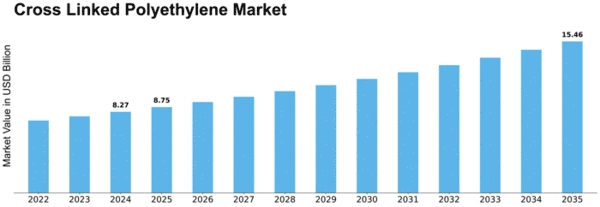

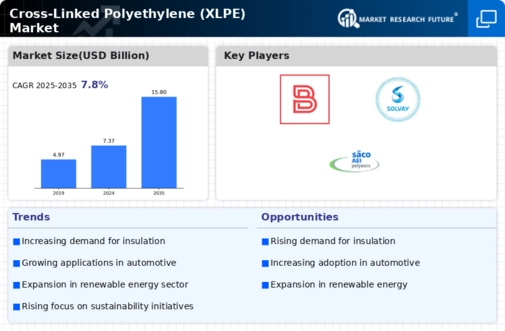
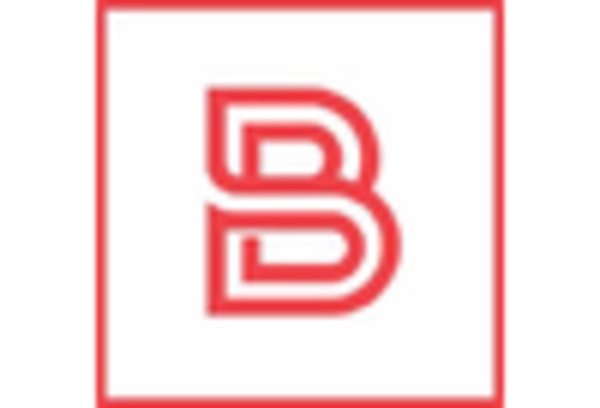
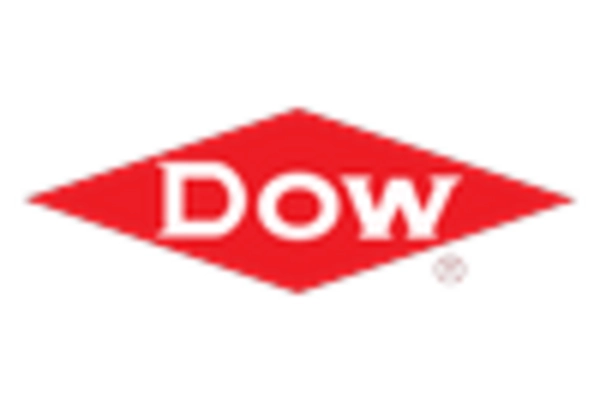
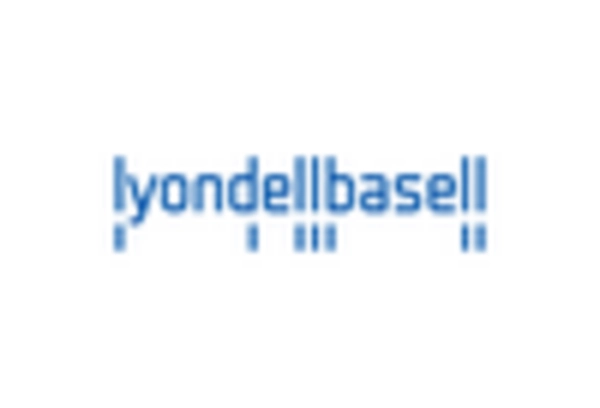
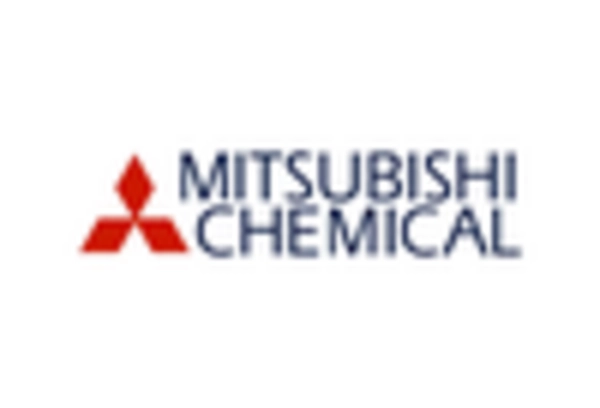

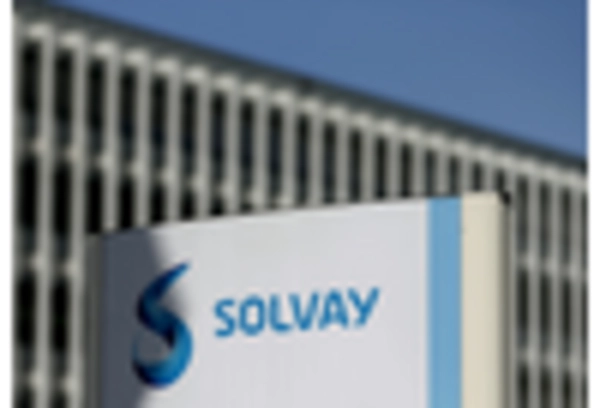









Leave a Comment